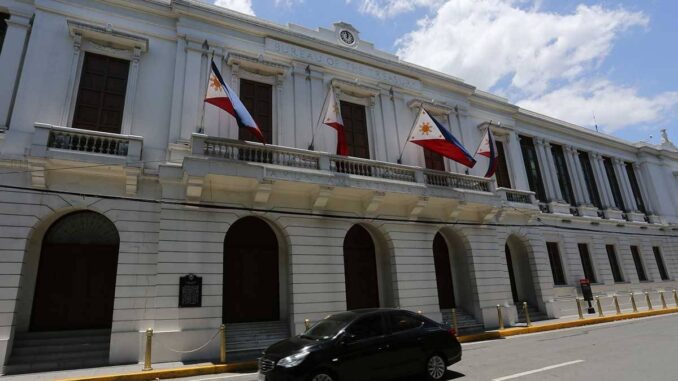
AN aggressive push to lower the debt-to-gross domestic product (GDP) ratio to pre-pandemic levels is not feasible, as this would adversely affect government spending and economic growth, the Bureau of the Treasury said.
The Philippines’ debt-to-GDP ratio surged during the pandemic years as the Duterte government borrowed heavily to mitigate Covid-19’s impact on the economy. From 39.5 percent in 2019, the ratio ballooned to 60.1 percent at the end of 2023.
Continued borrowings by the new administration have kept the rate high — it was 61.3 percent as of the third quarter of 2024 — but economic managers are targeting an easing to 60.6 percent by the end of this year and further to below 60 percent by 2028.
Amid concerns that high debt levels could affect the country’s credit ratings, turn off investors, and force the national government (NG) to rein in spending, the Treasury said that an “aggressive return to the pre-pandemic debt-to-GDP ratio of 39.6 percent is technically and politically infeasible,” the Treasury said in its recently released 2023 annual report.
“This would require a more dramatic fiscal adjustment where the NG must run consistent budgetary surpluses, which would deprive the country of the needed public investments to take advantage of its demographic trends and structural reforms to improve its business climate,” it added.
The Treasury said that as long as the medium-term fiscal framework remained credible, it would “continue to positively shape market perceptions about the riskiness of the Philippines’ debt, which is crucial to keep financing costs moderate enough to be outpaced by the country’s economic growth.”
“The medium-term fiscal program was carefully designed to balance the need to foster a strong post-pandemic economic momentum with the need to remain within the bounds of long-term debt sustainability,” the bureau said.
The MTFF calls for debt consolidation while maintaining enough fiscal flexibility to fund the public investments necessary to achieve a target of 6.4- to 7.8-percent annual real GDP growth, the Treasury noted.
It said that the debt level as of last year was notably lower than the historical peak of 71.6 percent in 2004 and well below the average of around 75 percent seen among credit rating and development peers.
As of end-September, the national government’s outstanding debt ballooned to a new record of P15.89 trillion due to continued borrowings.
While it continues to accelerate, the Treasury said last month that the level remained at a “manageable” level, with the bulk or 68.81 percent sourced from the domestic market.
The government’s borrowing mix remains skewed toward domestic sources at 75 percent this year, with the remaining 25 percent coming from abroad.
For next year until 2028, the government wants to adjust this to 80:20, still in favor of domestic sources, to reduce foreign exchange risks.
As of end-September, total borrowings hit P2.3 trillion, up 31.4 percent from P1.75 trillion a year earlier. This means the government has already utilized 89.4 percent of its P2.57-trillion borrowing target for the year.
Local lenders accounted for the bulk at 78 percent to P1.8 trillion, while the remaining was sourced from foreign sources (P504.45 billion).


Be the first to comment